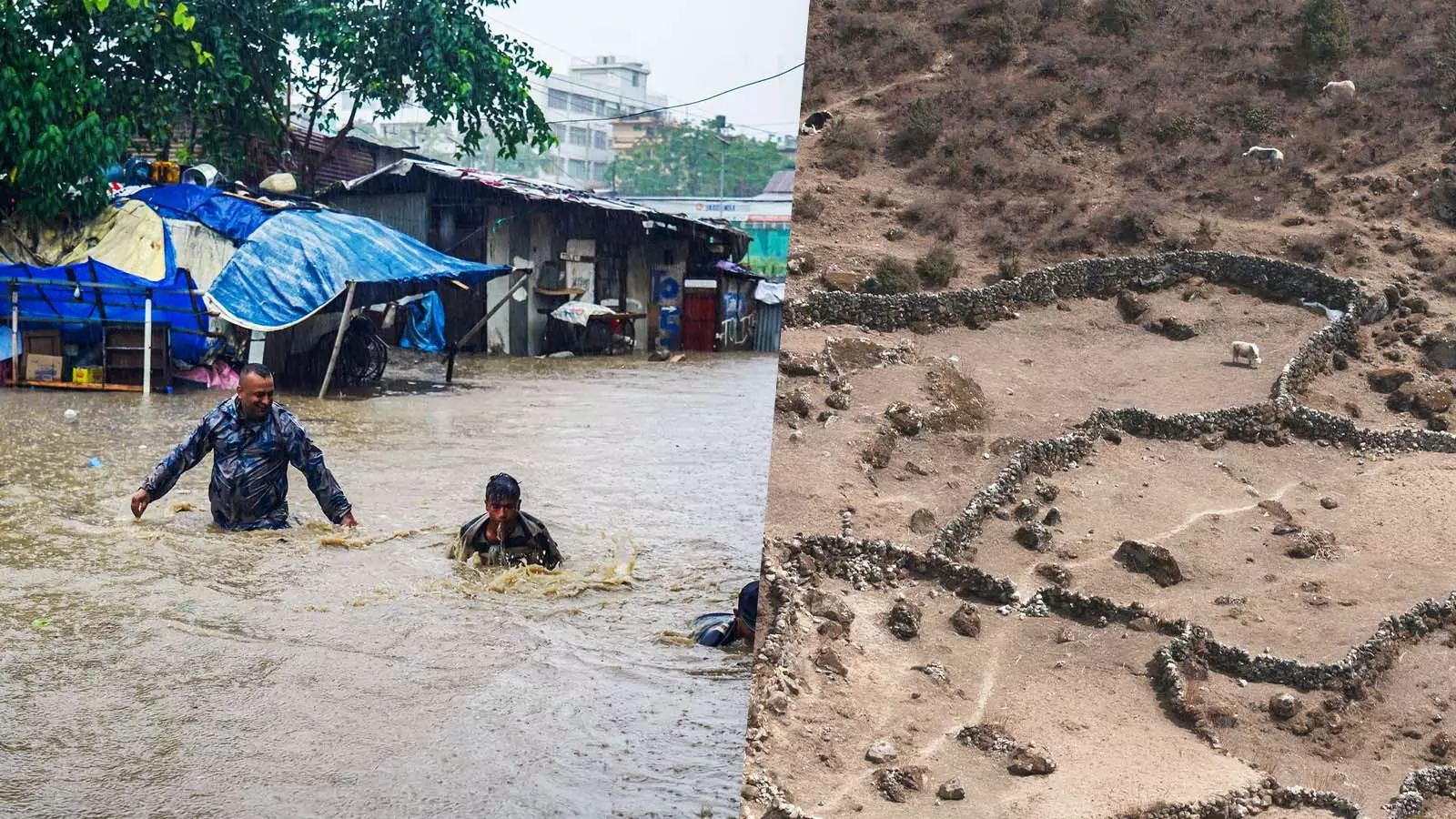
- Home
- India
- World
- Premium
- THE FEDERAL SPECIAL
- Analysis
- States
- Perspective
- Videos
- Sports
- Education
- Entertainment
- Elections
- Features
- Health
- Business
- Series
- In memoriam: Sheikh Mujibur Rahman
- Bishnoi's Men
- NEET TANGLE
- Economy Series
- Earth Day
- Kashmir’s Frozen Turbulence
- India@75
- The legend of Ramjanmabhoomi
- Liberalisation@30
- How to tame a dragon
- Celebrating biodiversity
- Farm Matters
- 50 days of solitude
- Bringing Migrants Home
- Budget 2020
- Jharkhand Votes
- The Federal Investigates
- The Federal Impact
- Vanishing Sand
- Gandhi @ 150
- Andhra Today
- Field report
- Operation Gulmarg
- Pandemic @1 Mn in India
- The Federal Year-End
- The Zero Year
- Science
- Brand studio
- Newsletter
- Elections 2024
- Events
- Home
- IndiaIndia
- World
- Analysis
- StatesStates
- PerspectivePerspective
- VideosVideos
- Sports
- Education
- Entertainment
- ElectionsElections
- Features
- Health
- BusinessBusiness
- Premium
- Loading...
Premium - Events

Severe droughts, flash floods, rising temperatures expose Himalayan kingdom's growing climate vulnerability and urgent need for long-term environmental action
Nepal is facing one of the most serious impacts of climate change in its history. The country is caught between two extremes — long periods of drought and sudden heavy rains.
These two opposite weather conditions have created serious problems for people, agriculture, and the environment. The situation is now turning into a national crisis that requires urgent and long-term attention.
Highly unpredictable weather
In recent years, the weather in Nepal has become highly unpredictable. The summer of 2025 was one of the hottest ever recorded. Temperatures rose to unbearable levels, making daily life difficult, especially in the Terai region.
Unfortunately, Nepal spends more on relief after disasters than on prevention before they occur.
During the months when rain was expected, there was almost no rainfall. Then, when the monsoon season was about to end, rain came suddenly and heavily, flooding many parts of the country. This unusual pattern of drought followed by extreme rain occurred in both 2024 and 2025.
Also Read: Spectre of student-led revolution: Why India must focus on education quality
Even in the high mountains, signs of warming are clearly visible. Places that were once permanently covered with snow are now seeing the growth of trees and shrubs. Such reports have even come from areas near Mount Everest, where the snow line is retreating.
In Kathmandu Valley, snake-bite cases have sharply increased. In the past, snakes were rarely seen in the city. Now, warmer temperatures and habitat changes have pushed them closer to human settlements in the hills. These examples show that climate change is affecting both nature and human life in unexpected ways.
Water shortage in Terai region
The Terai plains have suffered the most. This region, once known as the “food basket of Nepal,” remained dry for months. Farmers were unable to plant crops due to the lack of rain.
Tube wells and hand pumps stopped working because the groundwater level had dropped too low, sometimes below 400 feet.
Also read | Dam it! Tibet quakes ought to jolt Himalayan nations out of their egoism
People faced severe shortages of drinking water. Many families had to walk long distances to fetch water or depend on tankers. The lack of water also affected livestock, causing further economic hardship.
The heat was not limited to the Terai. Forest fires broke out in many hilly areas during the dry season. Travellers passing through highways such as the Banepa–Bardibas Highway saw forests burning on both sides of the road. Smoke filled the air, and passengers struggled to breathe.
These forest fires destroyed trees, harmed wildlife, and increased air pollution. The loss of forest cover has also made the soil more prone to erosion and landslides.
Destructive rain
When the monsoon finally arrived, it brought heavy and destructive rain. Rivers overflowed, and many villages were flooded.
Roads were blocked by landslides, and transportation was disrupted across the country. People living in remote areas were cut off from markets, schools, and hospitals.
Also read | How climate chaos is rewriting India’s water future
The rains also damaged bridges, irrigation systems, and houses. In September and October 2025 alone, floods and landslides killed 53 people, including 34 in Ilam district. In 2024, 224 people had died in similar disasters.
These figures show that the problem is getting worse every year.
Lack of disaster preparedness
Although the government and some organisations, such as the National Disaster Risk Reduction and Management Authority, tried to curb the damage, their efforts were not enough. There was little preparation before the disasters occurred. Early warning systems were weak, and relief operations were slow.
Had there been proper planning and investment in disaster preparedness, many lives and properties could have been saved. Unfortunately, the country spends more on relief after disasters than on prevention before they occur.
The growing number of droughts, floods, and landslides shows that nature is warning us. Ignoring these signs could lead to even greater disasters in the future.
Every year, floods, landslides, and droughts return, but there is still no clear and long-term plan to deal with them. The government and concerned agencies know what needs to be done, but there is a lack of will and seriousness. Political leaders are often busy with power struggles and pay little attention to environmental issues.
As a result, people continue to suffer from preventable disasters. There is an urgent need for public pressure to make the authorities act on these issues of national importance.
Water-management practices
Despite its damage, the late monsoon brought some benefits. It helped to recharge underground water sources. Many dried ponds, wells, and hand pumps started working again. The rivers also gained new life, and the extreme heat of the summer came down.
However, this benefit would have been much greater had the country adopted better water-management practices.
Also read | Religious overtourism and the unmaking of the sacred Himalayas
Simple and low-cost measures can help reduce the effects of both drought and floods.
Ponds and canals built along roadsides and in highland areas can store rainwater and control its flow during heavy rainfall. Tree plantation on hillsides and along riverbanks can prevent soil erosion, landslides, and flooding. Trees also help recharge groundwater and maintain the ecological balance.
Another useful method is to make small pits or holes in the ground to allow rainwater to seep down and refill underground aquifers. These methods are not expensive, but they require regular implementation and monitoring.
Practical, science-based policies
To face the growing threat of climate change, Nepal must adopt practical and science-based policies.
Meteorological and disaster management systems should be strengthened. Local communities should be trained to respond to emergencies and protect their natural resources. Farmers need support to shift towards climate-resilient crops and irrigation techniques.
Schools and colleges should include environmental education in their curricula so that young people understand the urgency of protecting nature. In addition, coordination among government bodies, civil society, and private organisations must improve.
Most importantly, political leaders must place people’s welfare above political games. Climate change is no longer a distant issue — it is a reality that affects everyone, whether they live in the Himalayas, the hills, or the plains.
Nature's warning
The growing number of droughts, floods, and landslides shows that nature is warning us. Ignoring these signs could lead to even greater disasters in the future.
Also read | Risks of glacial lake outburst floods in Third Pole region increasing, warns study
Nepal’s struggle with drought and excessive rain represents a warning for the entire world. It shows how fragile our environment has become. Rising temperatures, melting glaciers, declining rainfall, etc are changing the face of the country.
Unless immediate and strong actions are taken, the same cycle of crisis will repeat every year. The time to act is now. Nepal must move from reaction to prevention and from neglect to preparedness if it wants to protect its people and environment for future generations.
(The Federal seeks to present views and opinions from all sides of the spectrum. The information, ideas or opinions in the article are of the author and do not necessarily reflect the views of The Federal.)


